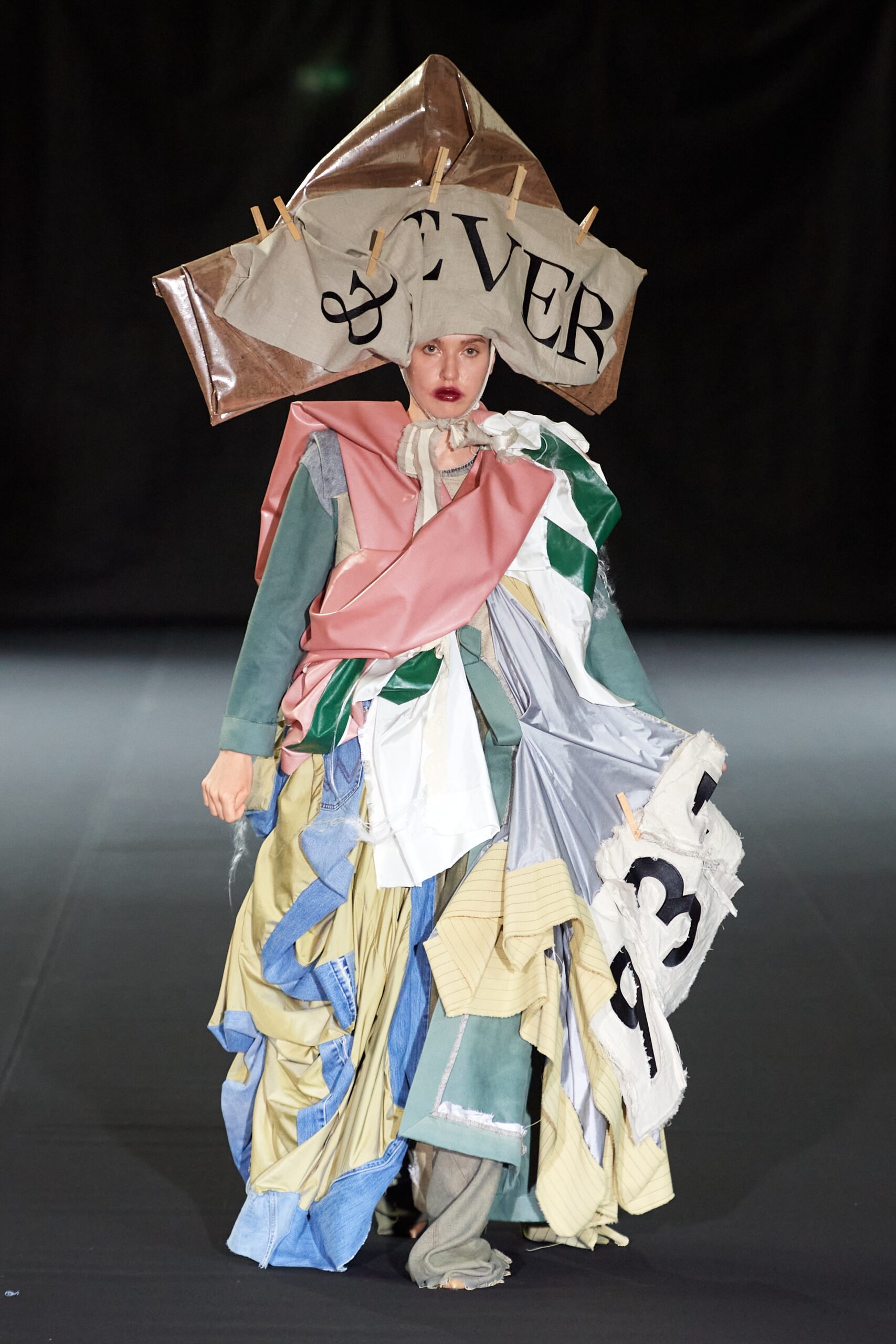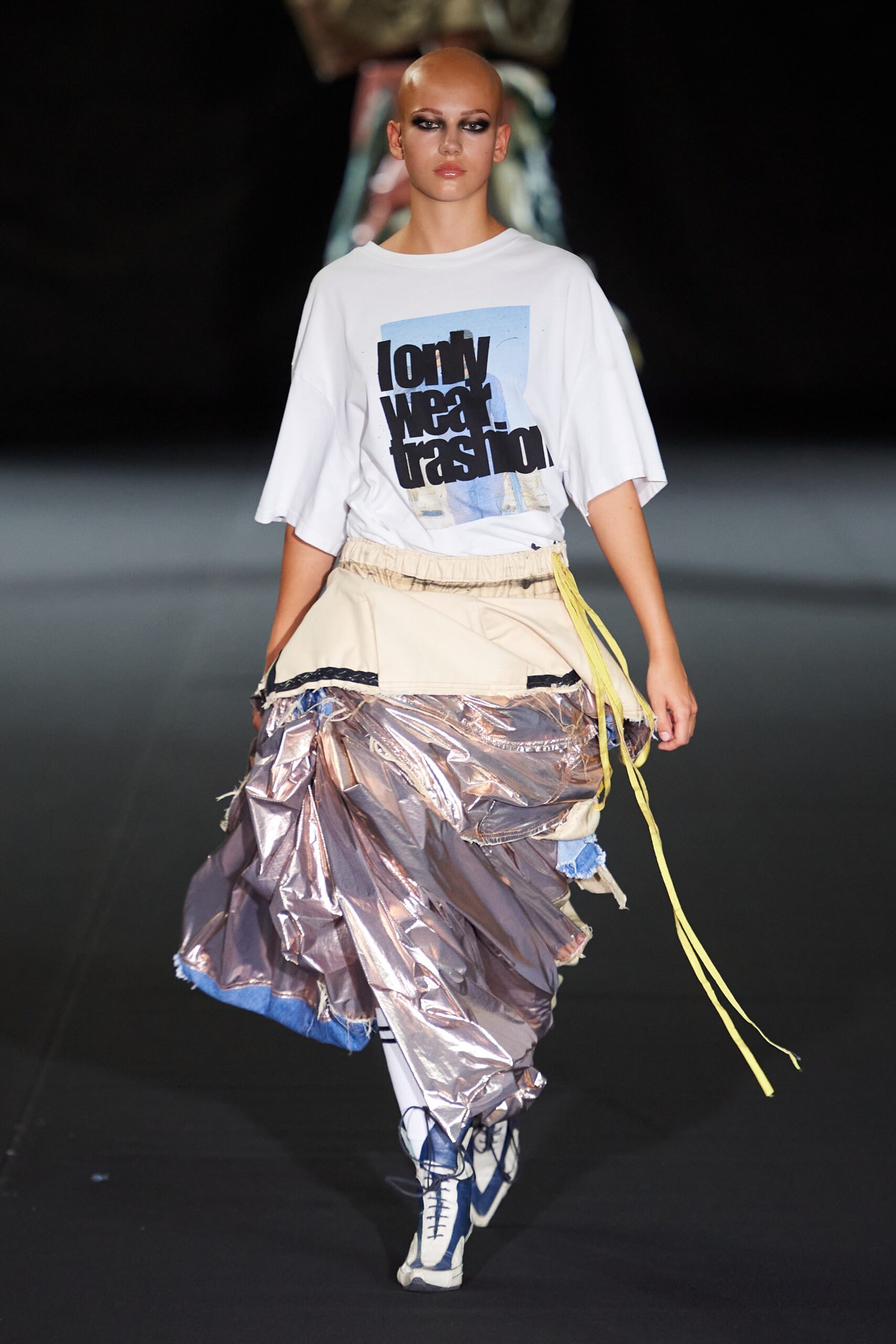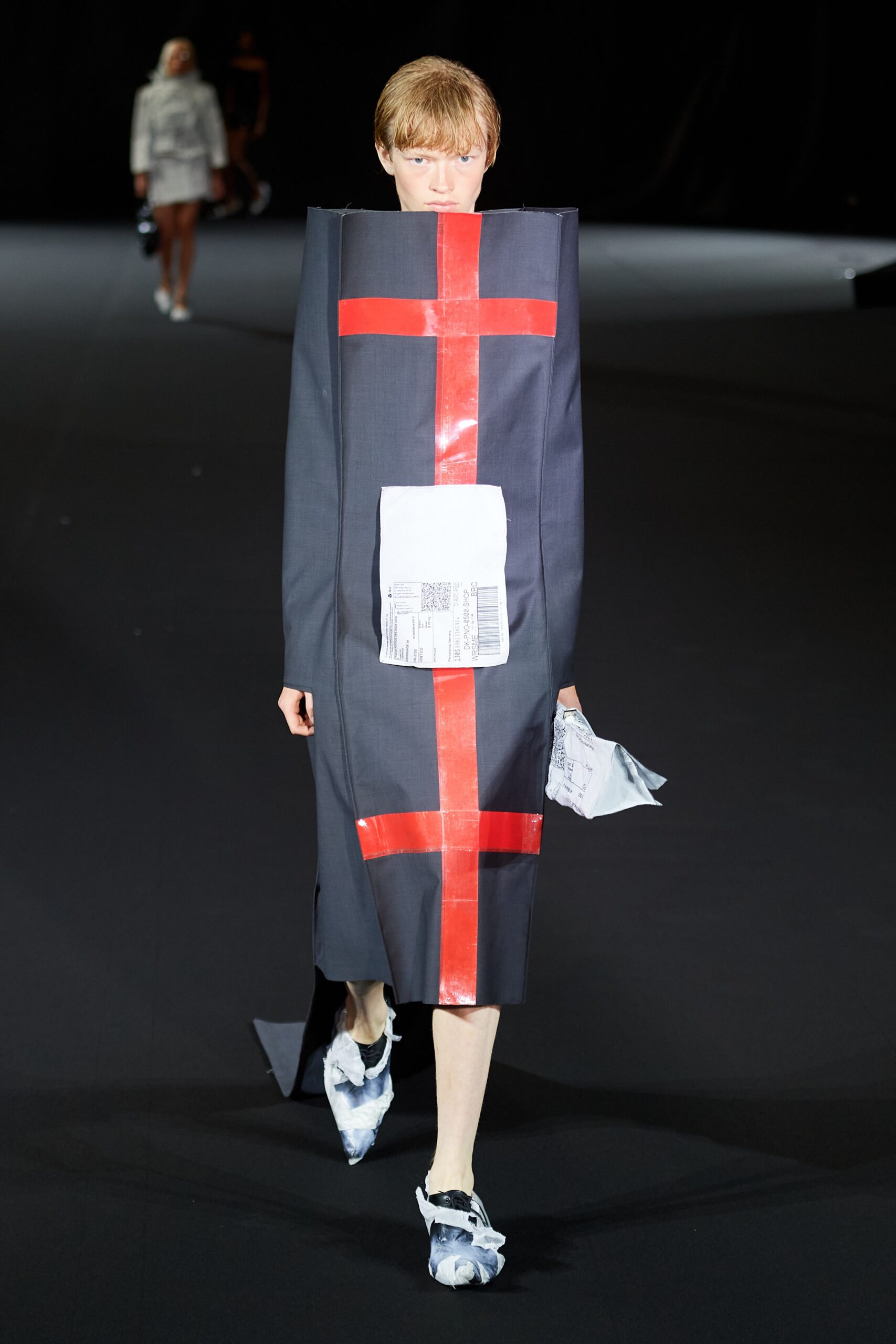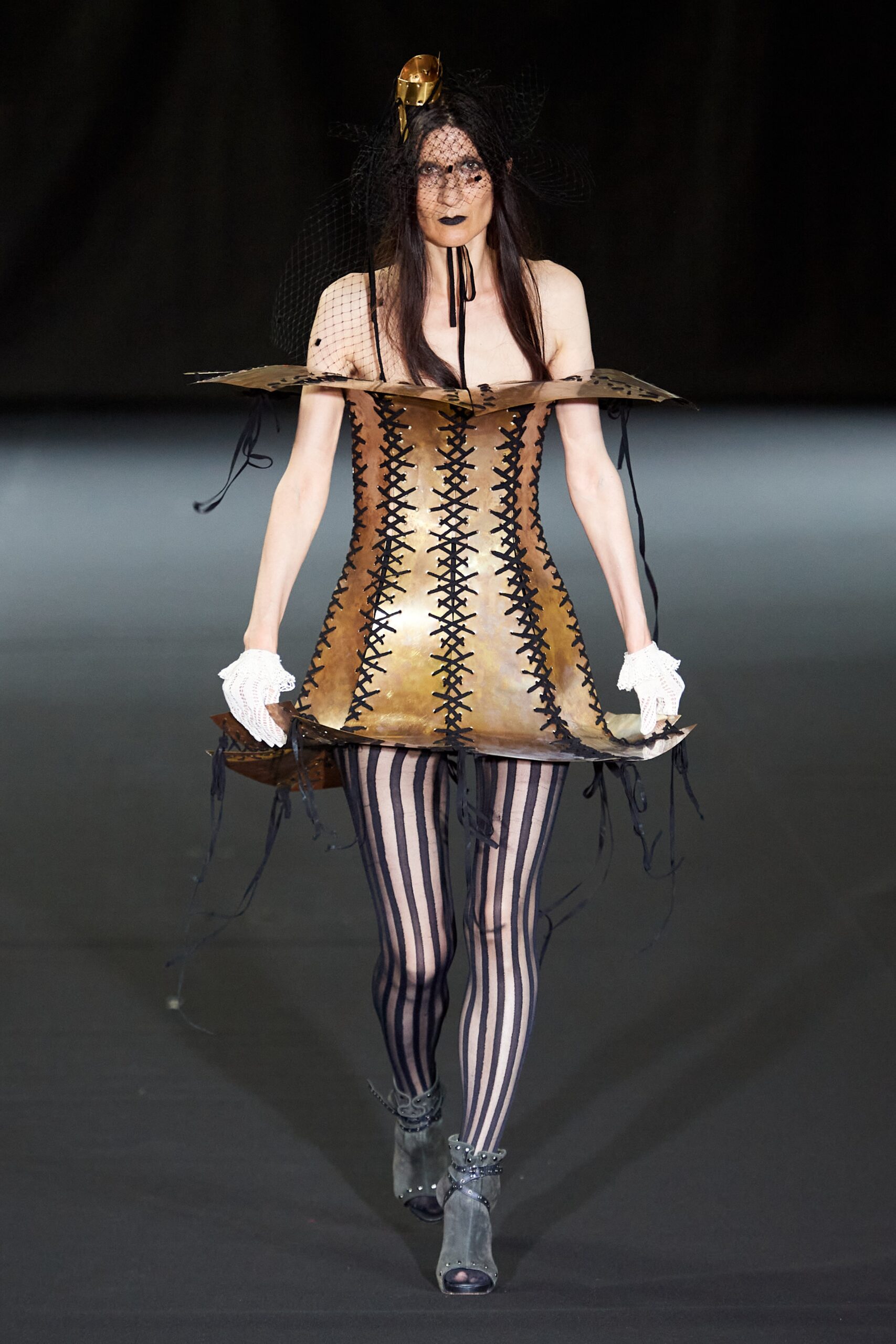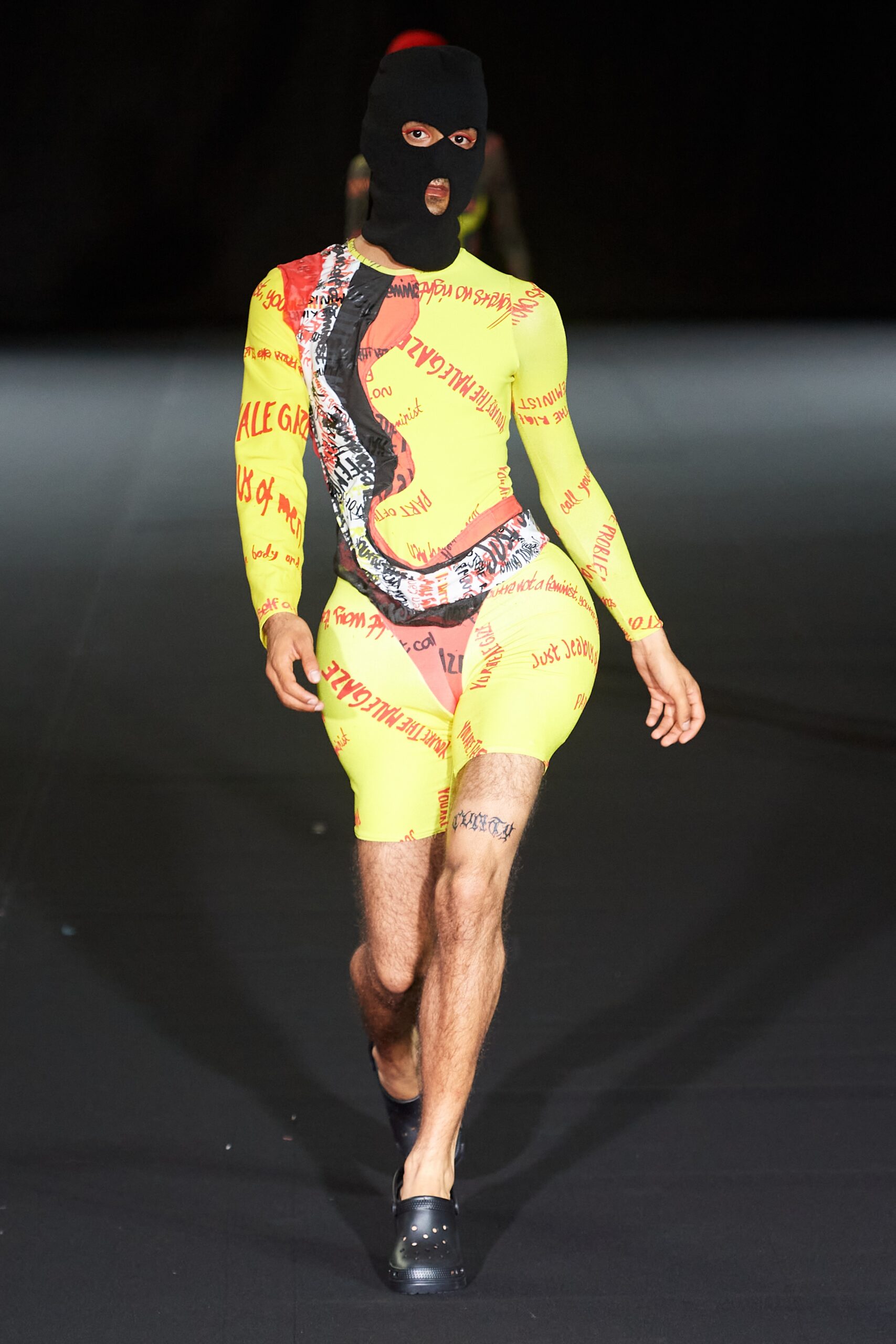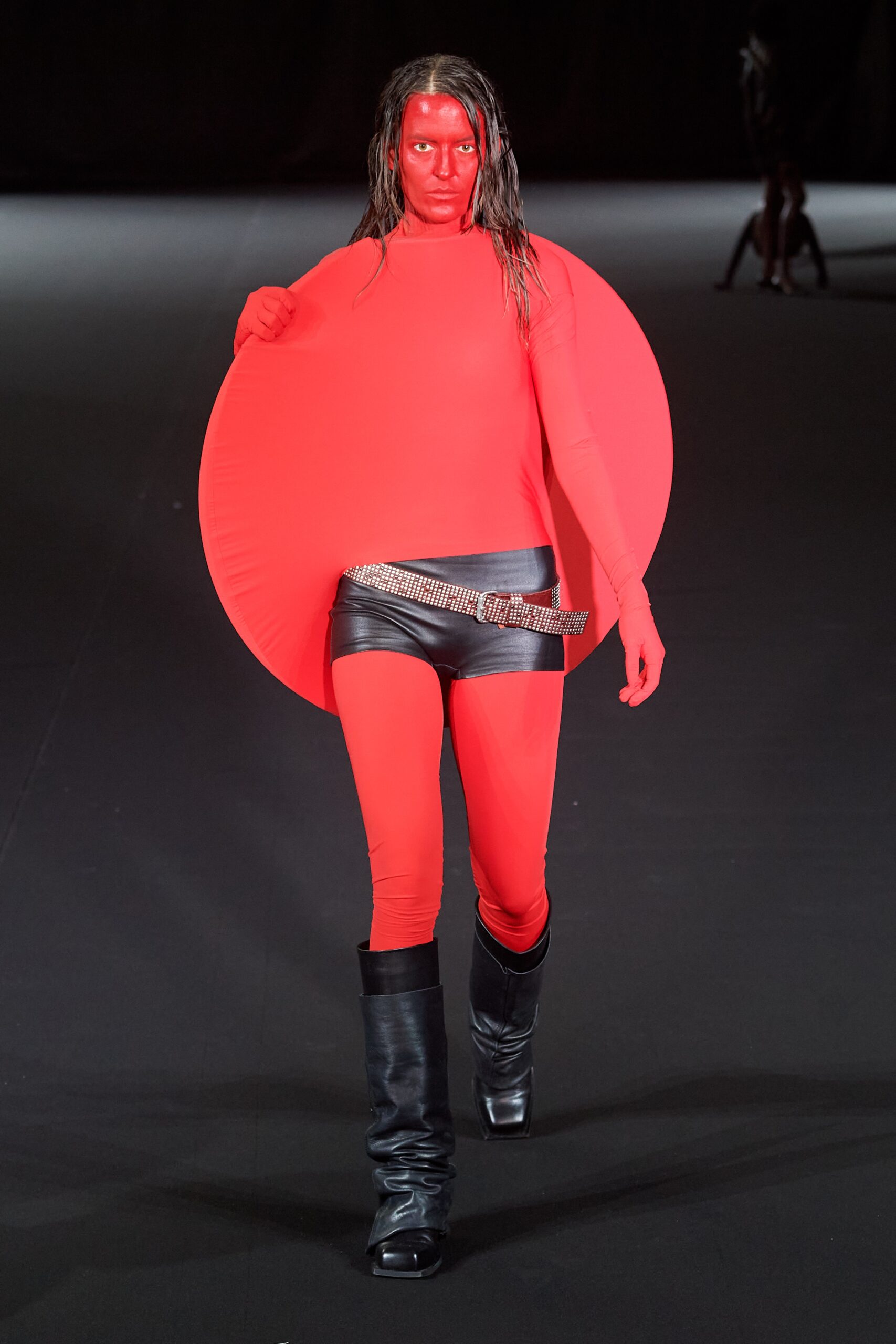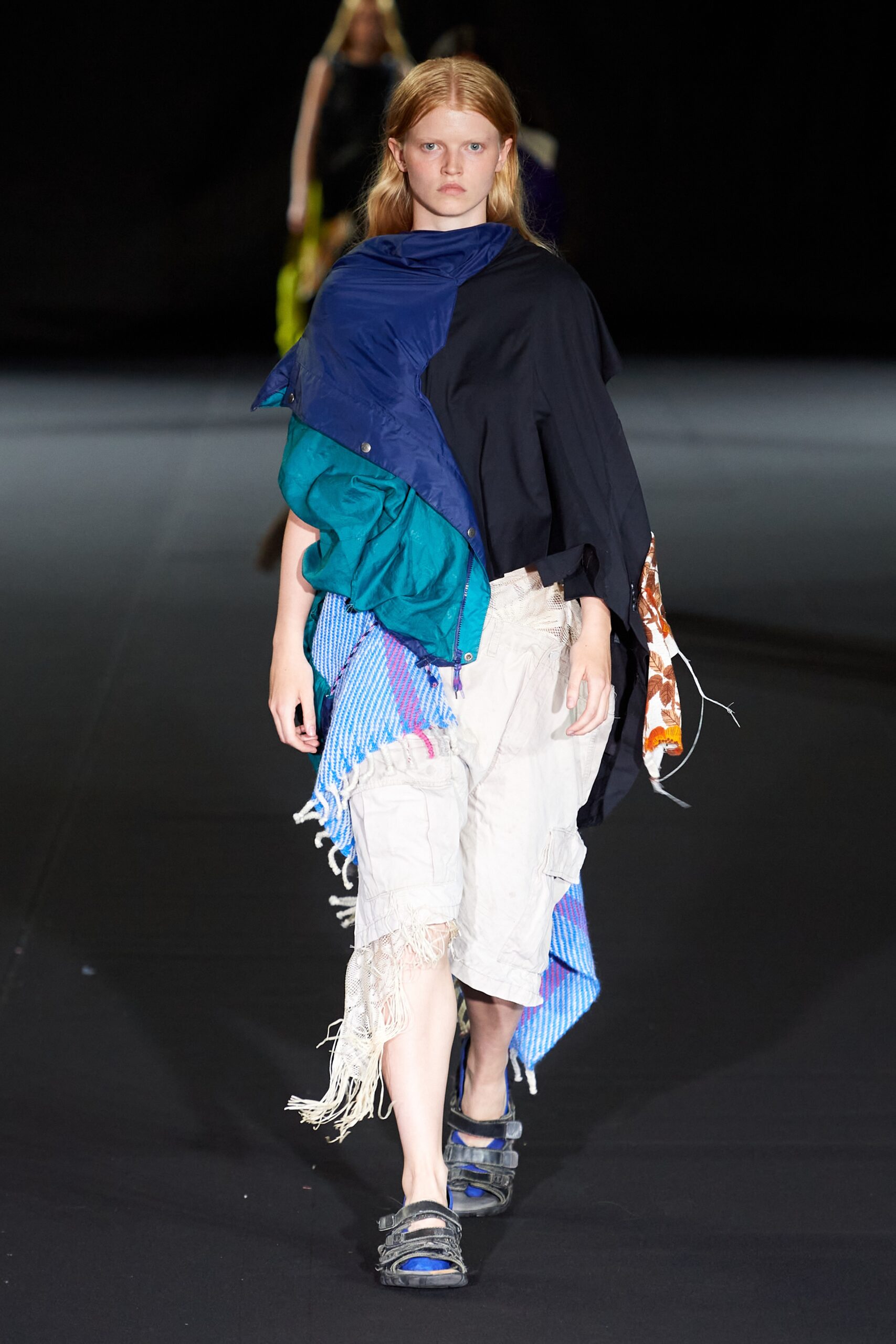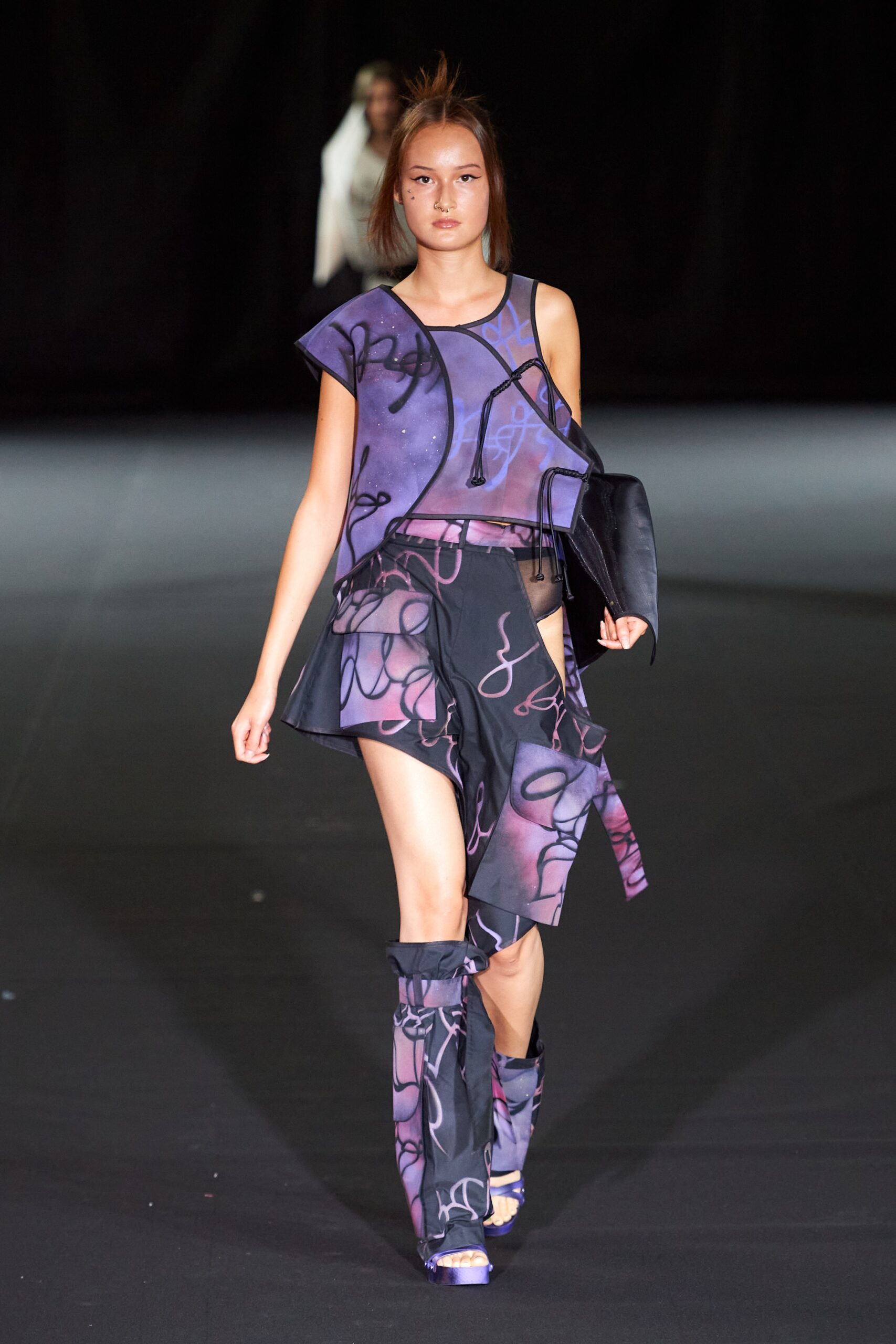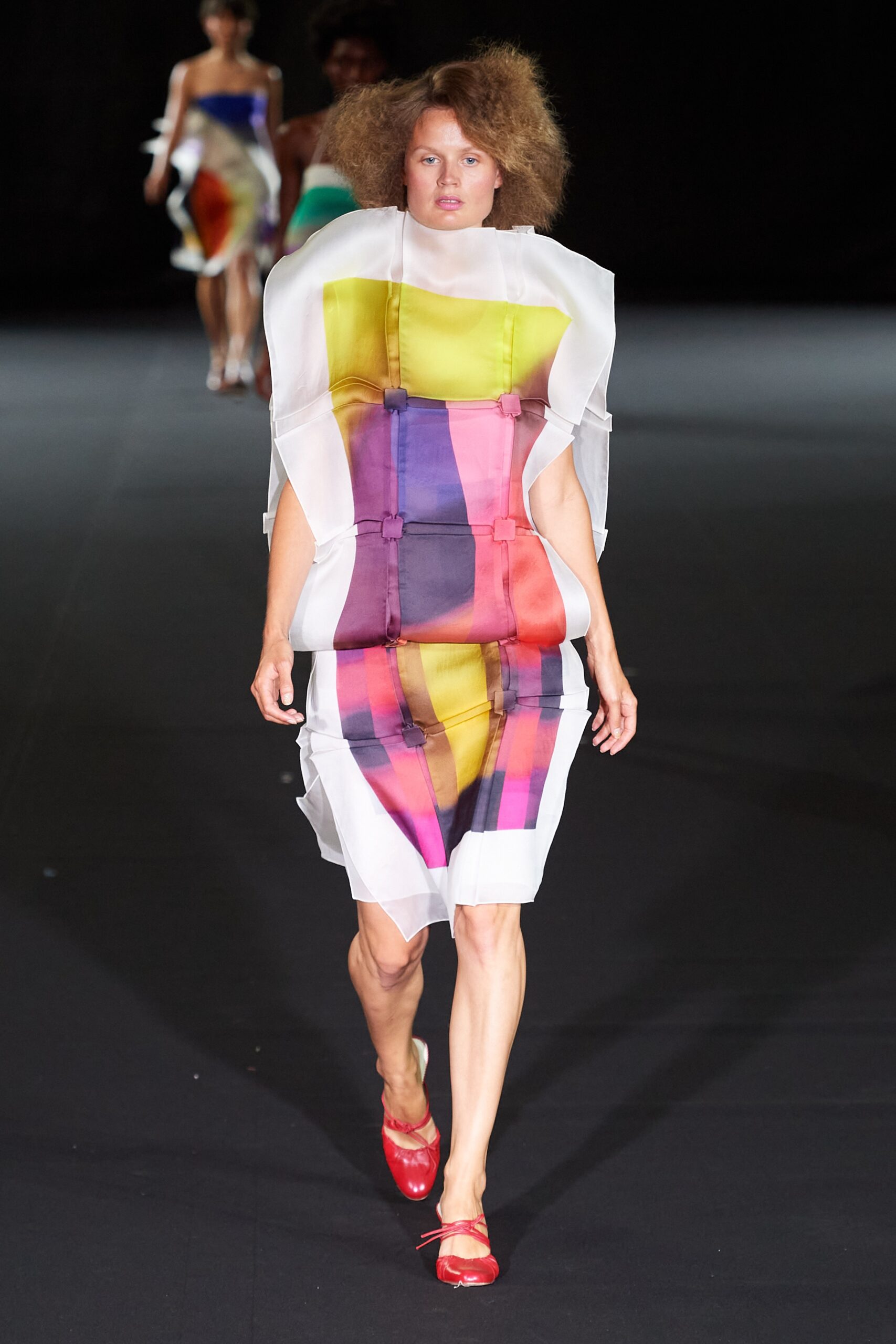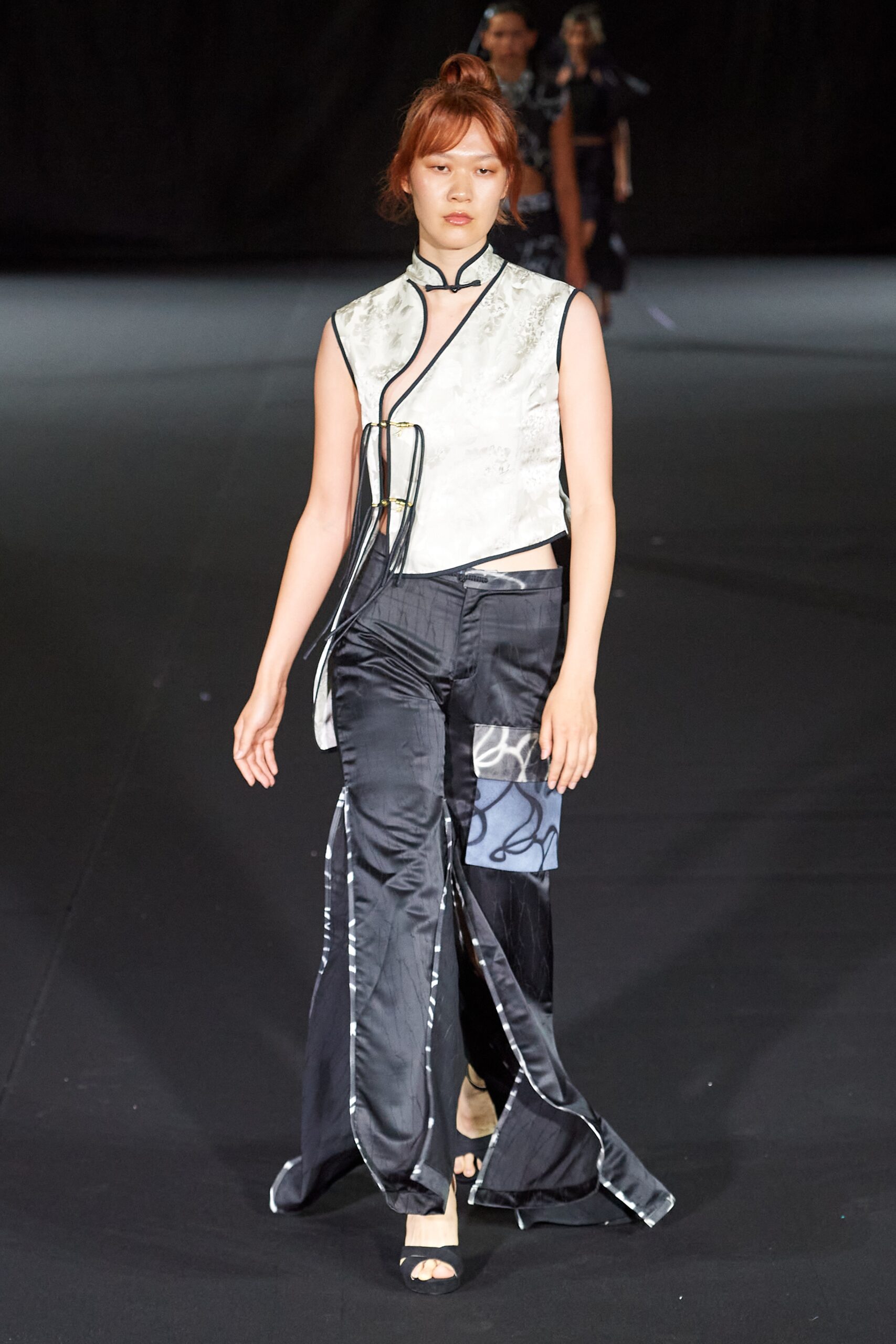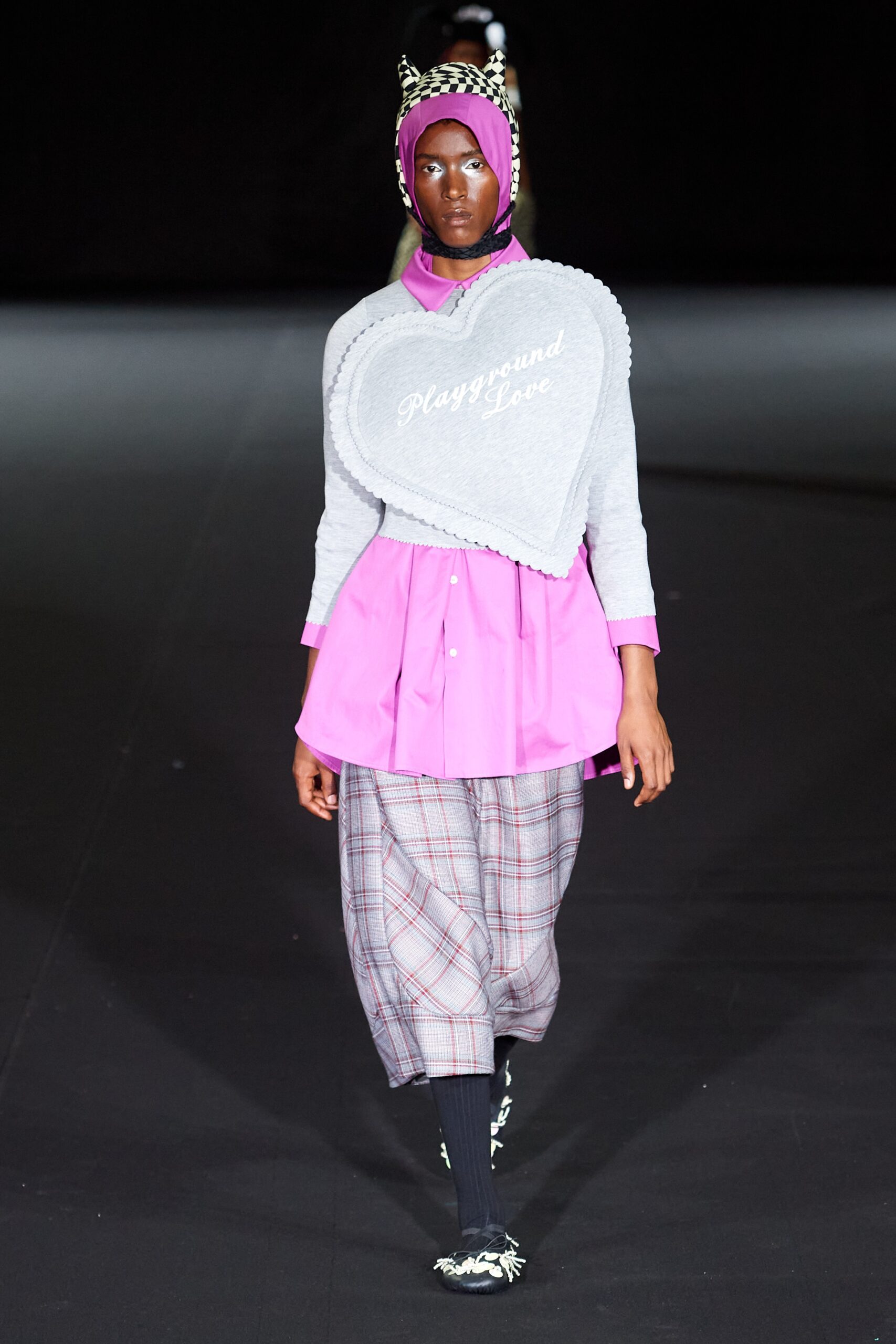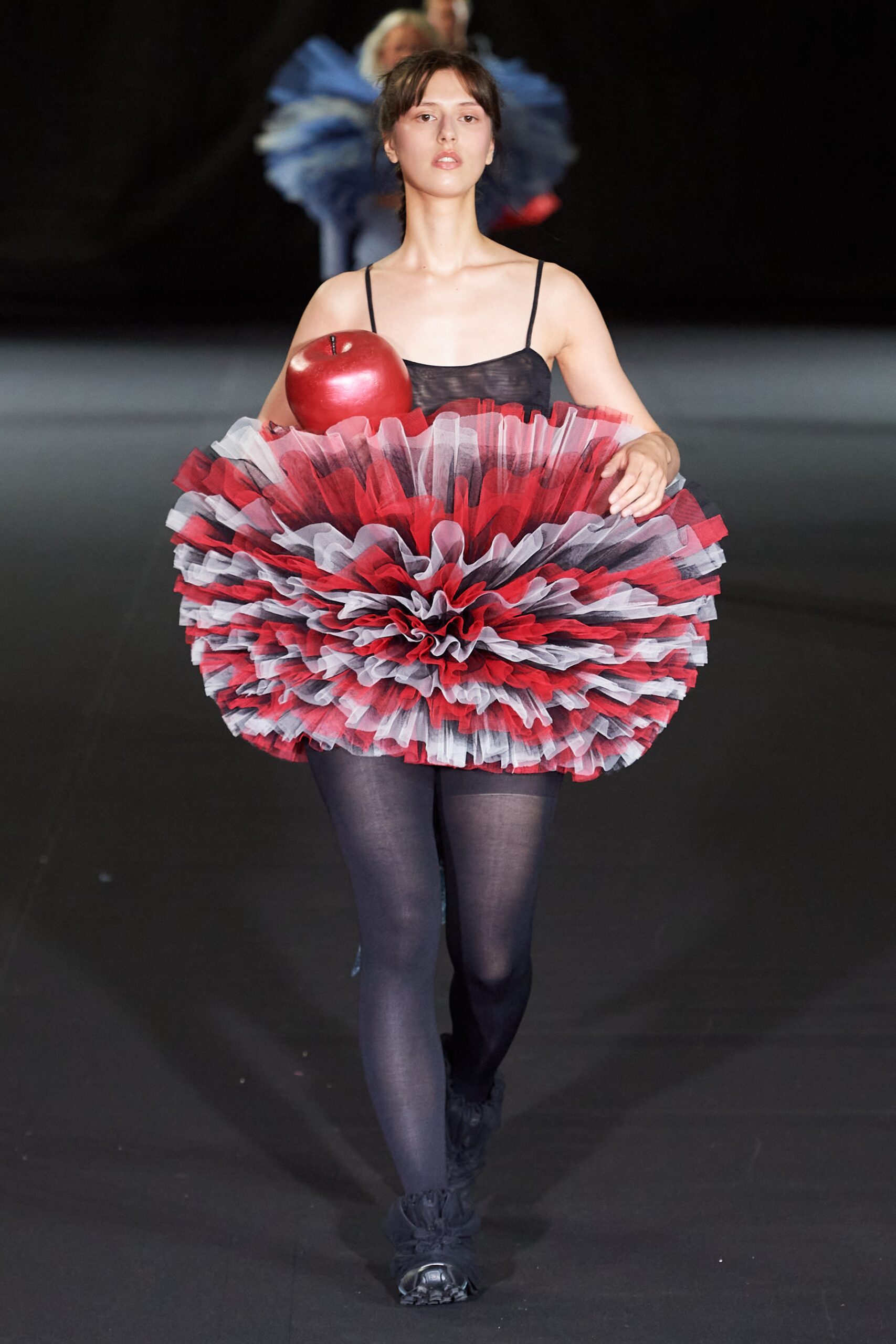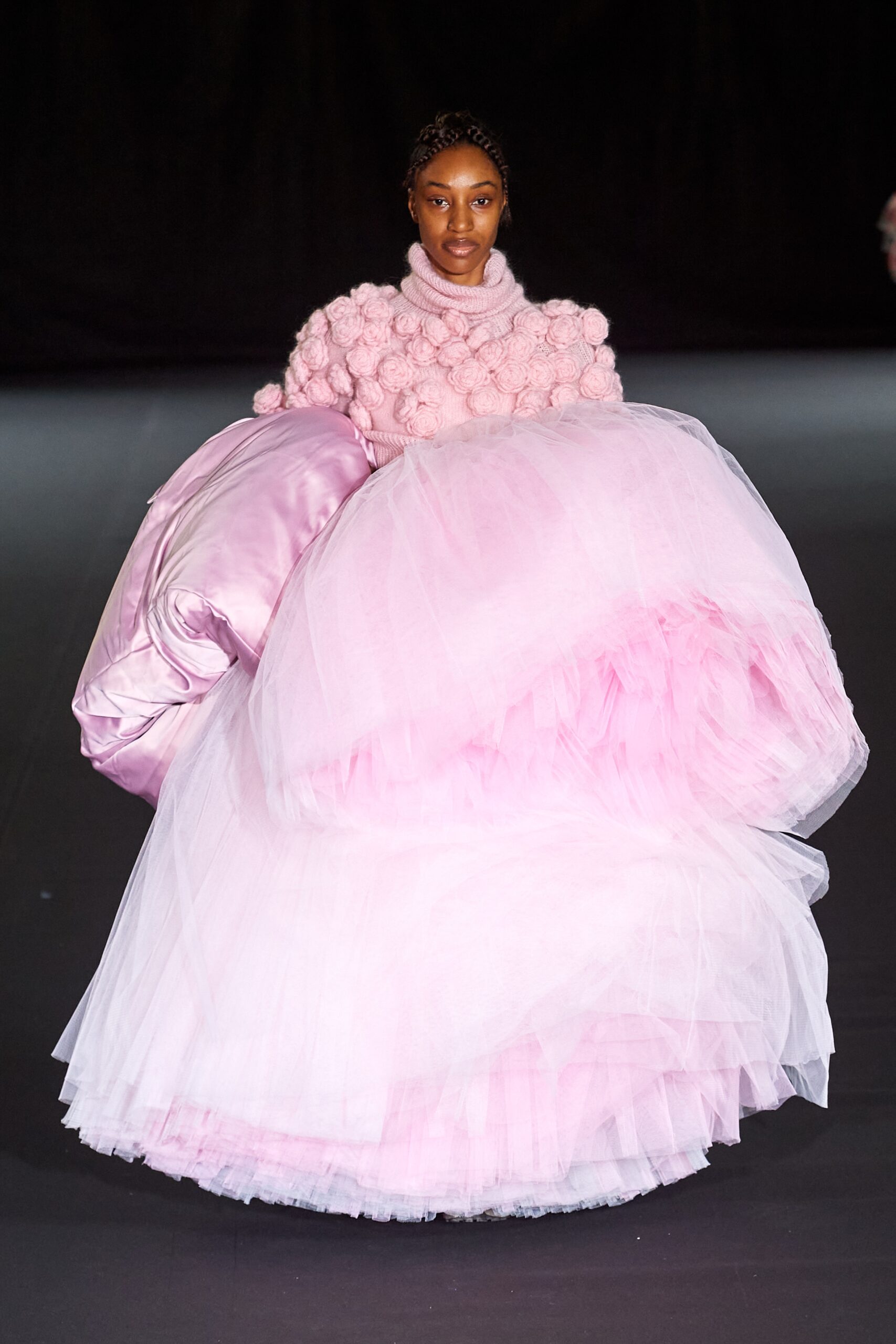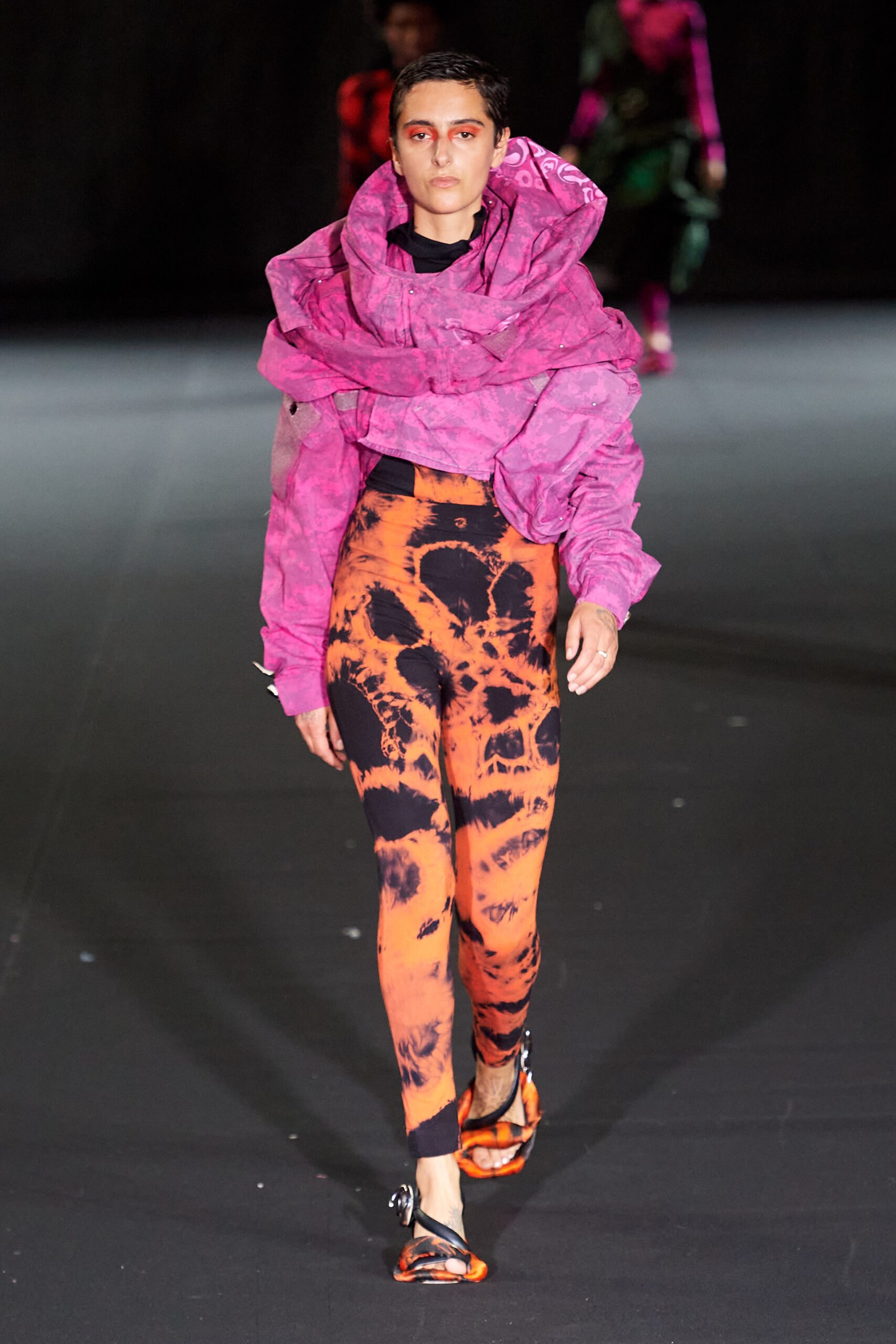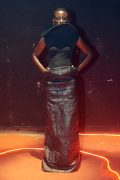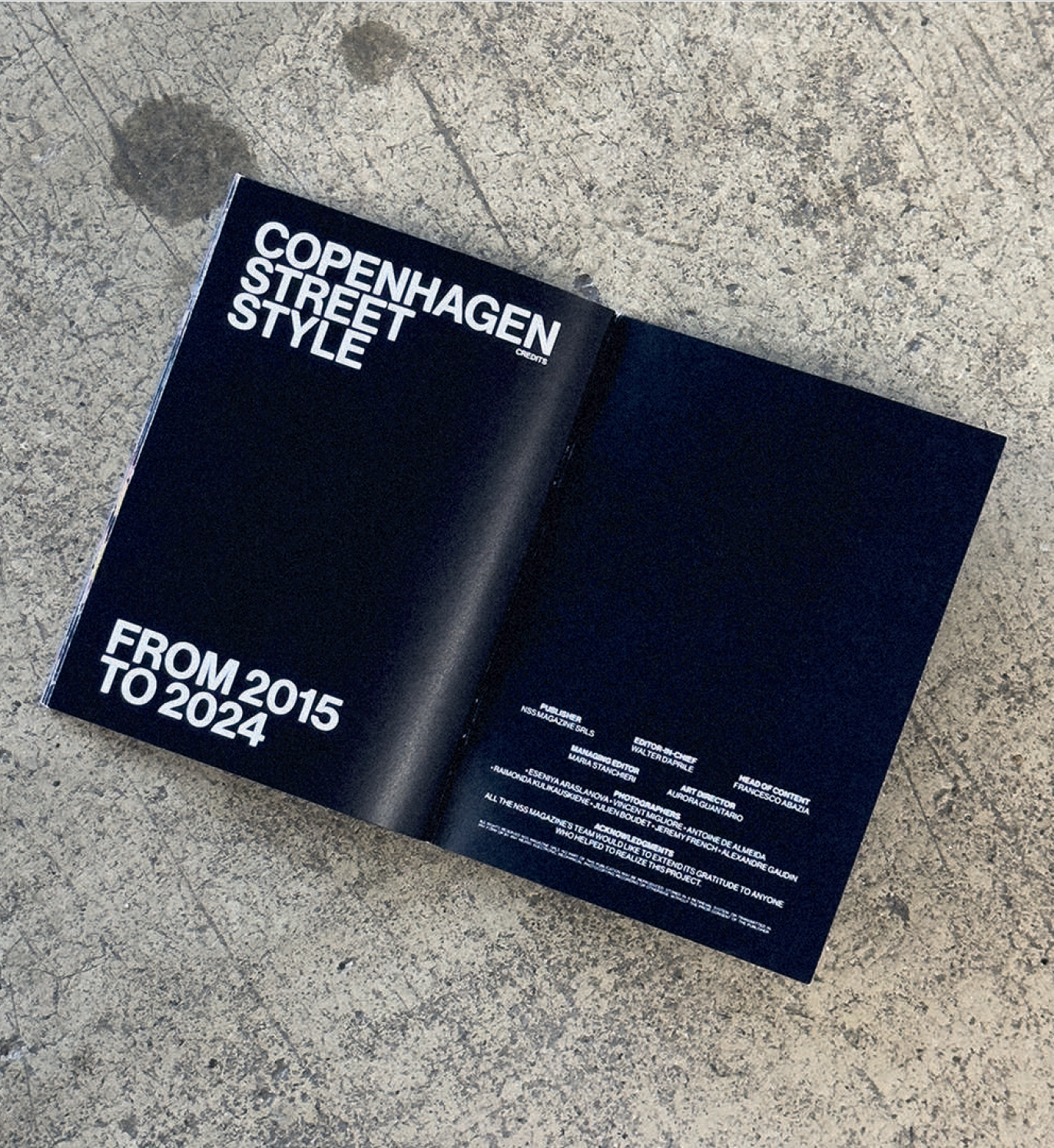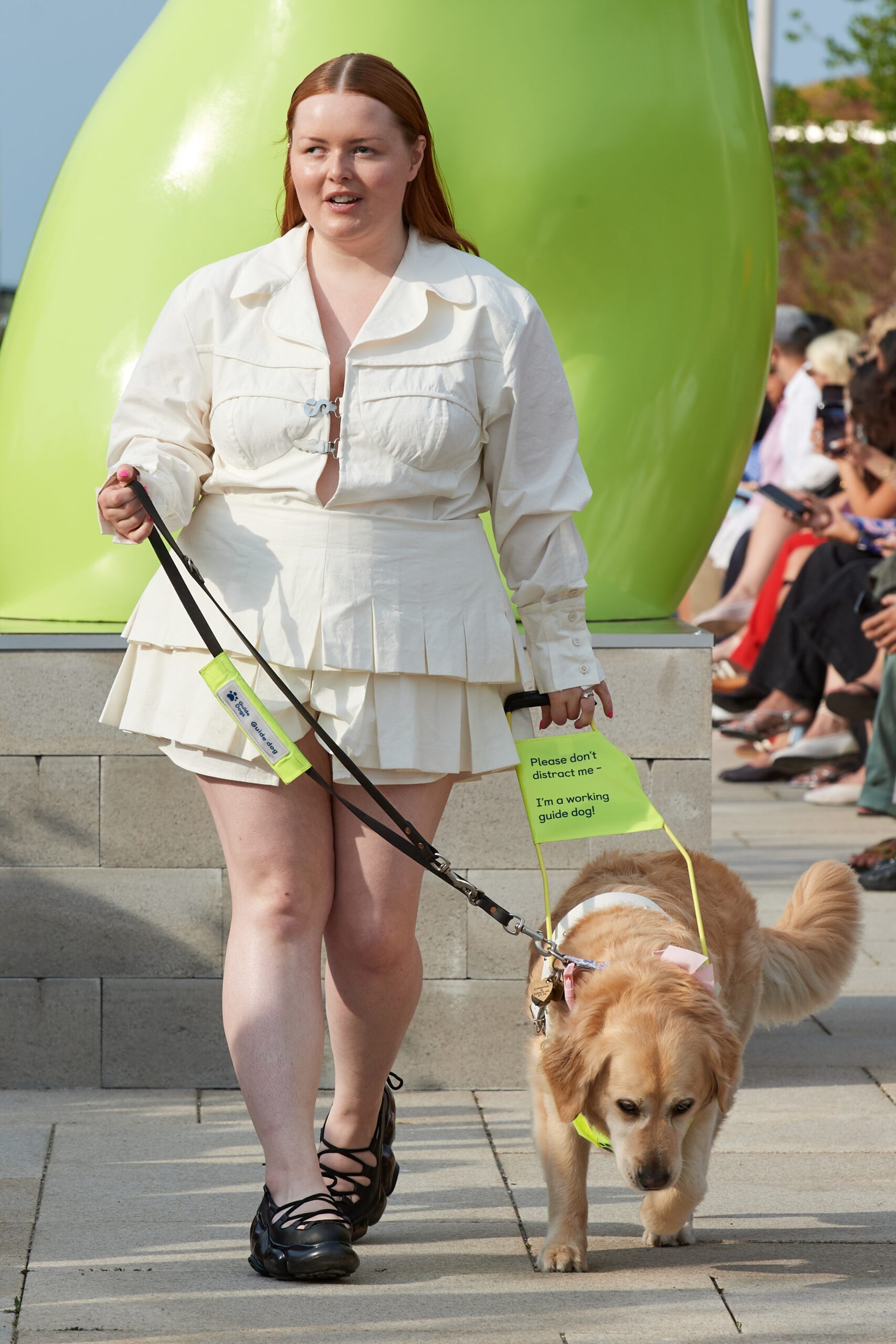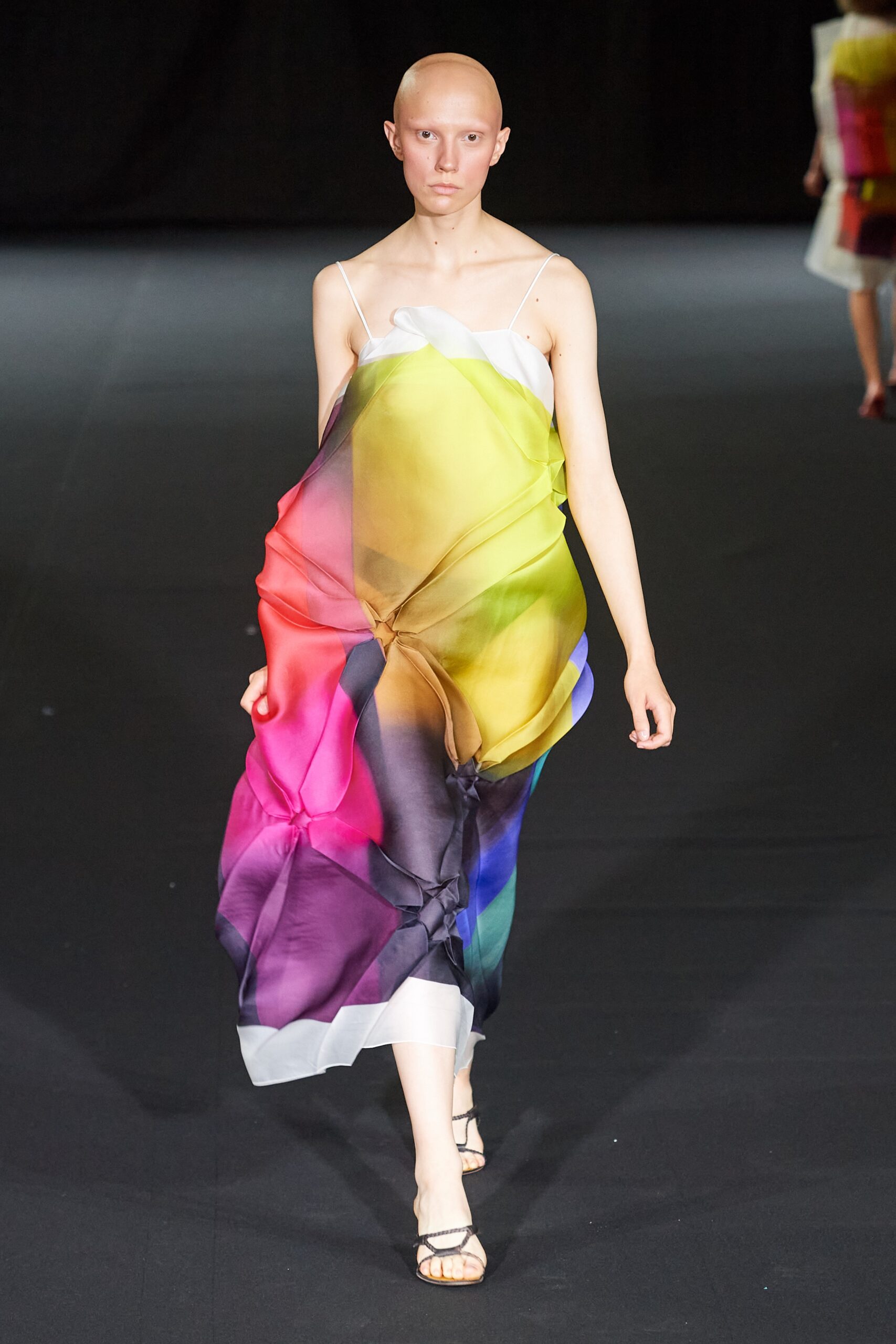
How fashion can make the world (just a little bit) better
This review is brought to you in collaboration with Bolou Fine Jewellery
READ THE ORIGINAL VERSION IN DANISH HERE.
The Royal Danish Academy, Tuesday, August 6, 2024 at 1 PM, Idrætshuset
It can’t be easy being a newly graduated designer, facing the reality you’re stepping into. A reality where the clothing industry has spiralled out of control, polluting and producing more than ever. How does one navigate an industry they love (which I assume they do, since they pursued a degree in design) while believing it needs significant improvement?
This tension was certainly present among the 14 newly graduated designers from the Royal Danish Academy, who showcased their graduation show at Idrætshuset Østerbro today. Many of the collections were imbued with social critique, provoking thought. Several collections seemed to comment on overconsumption, like Kathrine Kirk’s, where dresses had boxy shapes or were made from shipping packaging with labels intact – highlighting the enormous amount of packaging involved in the production of clothes.
Reading the press release from the Royal Danish Academy, it’s clear that the students have learned to use fashion as a tool for communication just as much as for creating garments. The programme they graduated from, Clothing & Textiles: New Landscapes for Change, aims to find new solutions and pathways for the fashion industry so it can continue to have relevance and a positive impact.
This use of fashion as a communication tool was taken quite literally by Juliane Rignel Jørgensen, who, as a commentary on internal conflicts within feminist circles, had written words like ‘angry’ and ‘anti-feminist’ on body-hugging styles made of black, spandex-like fabric. Her collection aimed to spark a dialogue about women’s tendency to criticise each other and the definition of the ‘right’ way to be a feminist. Similarly, Mai Sakamoto used fashion to make a statement in her collection ‘Love Bomb’, where military uniforms were upcycled beyond recognition, transforming a symbol of war into something positive.
Some of these statements might be a bit on the nose, and when viewing a school show, it’s essential to remember that it can’t be judged on the same terms as established brands that need to sell their products. Graduation collections should represent the essence of an idea and a student’s skills, rather than being immediately marketable or wearable on the streets. However, it is encouraging when collections show a commercially viable potential, suggesting a clear future path for the designer.
This was particularly evident in Trine Nielsen’s collection, where she dedicated herself to two techniques: a kind of cross-pleating that gave delicate silk fabric an origami-like pattern, and what I assume is a digital print adding rainbow hues to an otherwise completely white, semi-transparent base. This resulted in a beautiful outcome and a collection with strong coherence and a clear DNA from the new designer, which can be easily expanded upon.
The same can be said for Frederik Daugberg, who, with his oversized, asymmetrical balloon dress with distorted checks, achieved a Japanese-inspired look that could easily translate into full, marketable collections – with or without bunny ears and bat hats. While fashion shouldn’t solely be about commercialisation and sales, it is ultimately meant to be worn, and for that, there must be a wearer.
This review has been translated using ChatGPT.
See a selection of the show looks below and see the entire collection here.
